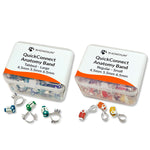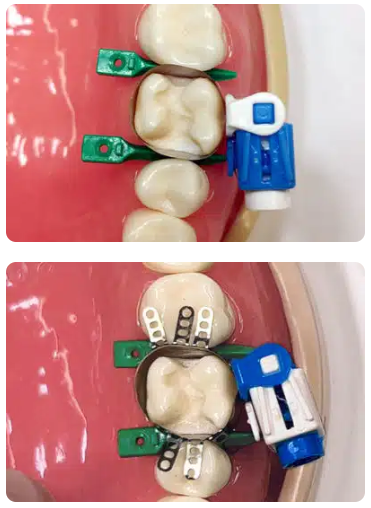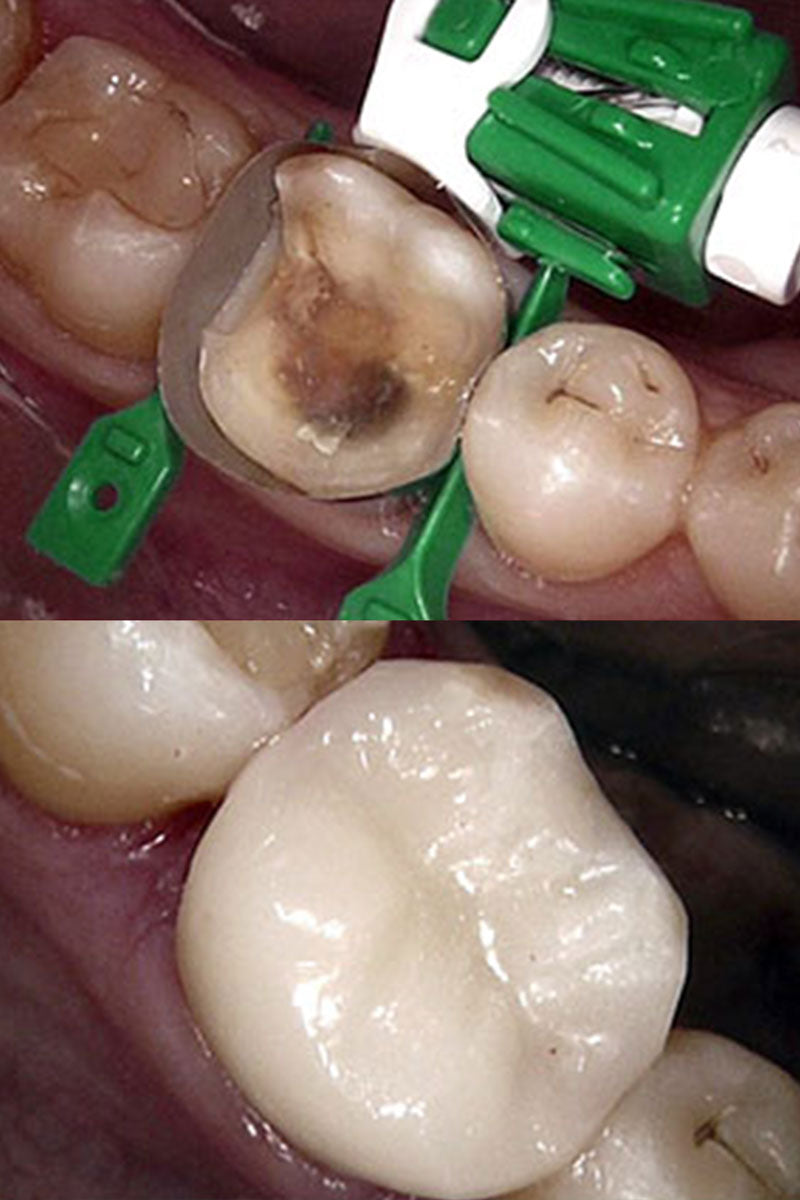
QuickConnect Anatomy Band Mixed Refill
The QuickConnect Anatomy Band is a pre-contoured, circumferential matrix designed for precision and consistent results.
The colour-coded, adjustable retainer stays securely in place without loosening, while the swivelling arm enables use in any quadrant.
Our QuickConnect Anatomy Bands are available in two circumferential sizes and offer three different height options.
- The 'Large' size is primarily designed for use on molars.
- The 'Small' size is versatile and can be used on both small molars and premolars.
Our QuickConnect Anatomy Bands also come in two versions - regular and tabbed.
The tabbed QuickConnect Anatomy Band has special “Tight-Contact-Tabs” that are pulled with a dental probe while light-curing to ensure the matrix band is in contact with adjacent teeth, guaranteeing tight contacts. Alternatively, they can be temporarily bonded to the occlusal surfaces of the adjacent teeth using dental bond and flowable composite.
Contents:
Choose your type & size
The Regular Mixed Refill has 15 x 4.5mm, 20 x 5.5mm, and 15 x 6.5mm (50 bands total)
The Tabbed Mixed Refill has 12 x 4.5mm, 18 x 5.5mm, and 15 x 6.5mm (45 bands total)
The Regular Mixed Refill 8mm has 25 x Small and 25 x Large
The Tabbed Mixed Refill 8mm has 23 x Small and 22 x Large
Case study supplied by Dr. Richard Stallworthy
Case study supplied by Dr. Richard Stallworthy
Case study supplied by Dr. Ben Simmons
Case study supplied by Dr. Ben Simmons
Case study supplied by Dr. Natasha Bell
Case study supplied by Dr. Natasha Bell
Case study supplied by Aiden Ho
Case study supplied by Aiden Ho
If you have any questions about this product, please let us know by filling out the form below, and we will contact you as soon as possible.
Clinicians Thoughts

Why QuickConnect
Restorations made simpler
The QuickConnect Anatomy Band is a next-generation circumferential matrix system designed to take the hassle out of complex composite restorations. Many dentists haven’t come across it yet, but it’s built to solve familiar frustrations: poor contours, loose bands, and hard-to-reach areas.
What makes QuickConnect stand out is its pre-contoured design and detachable carrier, which give you secure placement, reliable contacts, and smoother finishing — without the common headaches of traditional systems.

Smarter placement, less struggle
The detachable stainless-steel carrier makes placement intuitive, even in tight or difficult quadrants. Once the band is secure, the carrier can be removed to stay out of your way. This means better access, less interference, and fewer adjustments mid-procedure.

















